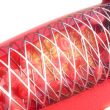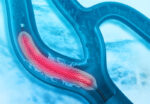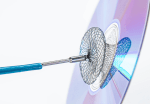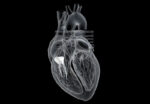In stent restenosis (ISR) continues to be the main limitation to the percutaneous treatment of coronary artery disease, with 5 to 10% prevalence after new generation DES stenting. Guideline recommendations for this intervention include new DES stenting and the use of drug coated balloons (DCB). Recurrent ISR stenting rate ranges between 10 and 40%, and...
PCI Evolution in Infiltrative Diseases
Infiltrative diseases (ID) consist of a heterogeneous series of genetic conditions that cause infiltration and extracellular deposits which alter the diverse systems and organs affected. Amyloidosis, sarcoidosis and hemochromatosis affect the heart, altering the myocardium and the conduction system. PCI is often used at present to treat heart disease, and some of these patients present...
KODRA Registry: Distal Radial Access as First Choice in Coronary Procedures
The first experiences with distal radial access (DRA) have revealed significant benefits compared against the transradial approach (TRA), showing reduced bleeding events and better puncture site occlusion rate. Even the spectrum of diseases treated with DRA has grown, and now includes chronic total occlusion (CTO) though 7Fr inductors, such as Terumo’s Glidesheath Slender. The aim...
Should We Treat Obstructive Coronary Artery Disease in TAVI?
Coronary artery disease, both obstructive and non-obstructive, often coexists with significant aortic stenosis. Therapeutic decision-making in this scenario remains controversial, not only regarding the need for treatment, but also about when it should be addressed, considering its pros and cons. Various analyses have yielded contradictory data, as most lesions are chronic and stable. Currently, the...
Left Atrial Appendage Closure and Concomitant Transcatheter Intervention: Can We?
Several scientific societies support performing left atrial appendage occlusion (LAAO) as a stand-alone procedure, even though it is often associated to other cardiomyopathies requiring transcatheter intervention. Though still controversial, combining LAAO and any other cardiac intervention might reduce hospitalizations, as well as the need for additional punctures, anesthesia, red tape, a longer stay and higher...
Benefit of Cusp overlap method for self‐expanding transcatheter aortic valves
The need for permanent pacemaker implantation (PPM) continues to be one of the main challenges in TAVR, especially with self-expanding valves, with a pacemaker implantation rate that varies between 17.5% and 30% in large randomized studies, vs. 4% to 6.5% with self-expanding valves. Therefore, in an attempt to prevent the need for PPM implantation, the...
Promising Results of Transcatheter Mitral Valve Replacement in Bioprosthesis Failure
Failure of a mitral bioprosthesis always poses a challenge regarding decision-making, especially when dealing with elderly patients with multiple risk factors. The scenario is worsened by the high risk associated with a new sternotomy and the significant impact of undergoing new surgery. Transcatheter mitral valve-in-valve (TMViV) replacement is emerging as a valid strategy in the...
Events According to Revascularization Modality in the ISCHEMIA Trial
The main studies carried out on patients with chronic coronary syndromes (CCS), such as the MASS II, COURAGE, BARI 2D and FAME-2, failed to show benefits in terms of mortality with the invasive approach. The ISCHEMIA, a large randomized study including patients with moderate to severe ischemia, with without left main disease and with acceptable...
Clopidogrel Monotherapy Beyond 12 months: Long Term Analysis of the STOPDAPT-2
Short dual antiplatelet therapy (DAPT) has shown benefits in patients receiving drug eluting stents (DES), reducing bleeding with no concomitant increase in major adverse cardiovascular events (MACE). Traditionally, the therapeutic window was limited to monotherapy with P2Y12 inhibitors during the first year and there are few data on short DAPT followed by long term monotherapy...
TricValve: 12-Month Evolution
Tricuspid regurgitation has become increasingly common, and current pharmacological treatment options are limited. In turn, surgery, which is a complex alternative, carries considerable rates of complications and mortality. In response to this issue, various percutaneous systems are being developed, such as edge-to-edge treatment, percutaneous annuloplasty, and caval valve implantation (CAVI), among others. In the analysis...









